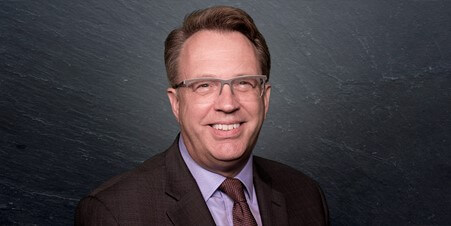“The clock is ticking” has become a regular refrain of regulators intent on keeping financial market participants on course to replace the London interbank offered rate (Libor) by the end of 2021. For many in the U.S., the transition will be to the Secured Overnight Financing Rate (SOFR), as selected by the Federal Reserve-sponsored Alternative Reference Rates Committee (ARRC) in 2017.
But there are many moving parts to consider, and other alternatives. In July, Intercontinental Exchange's ICE Benchmark Administration (IBA) published a revised benchmark proposal to price floating-rate debt in place of Libor.
“An update regarding IBA's ongoing work in relation to Libor,” summarized in public minutes of its Libor Oversight Committee's July 9 meeting, cited “three key themes” that indicate the many issues at play in the transition to risk-free rates (RFRs) in the U.S. and several other major markets: “(1) the different levels of transition progress to alternative RFRs with regards to individual Libor currencies; (2) the technology, systems and process development required for transition to be effected; and (3) the overarching challenge for lending markets to transition to alternative RFRs by educating bankers and them, in turn, talking to their clients to find solutions, in particular for legacy contracts that are impossible or impractical to amend.”
SOFR got the ARRC nod largely because it is derived from a huge volume of repurchase-agreement (repo) transactions and thus hard to manipulate. Regulators and other organizations such as the International Swaps and Derivatives Association (ISDA) have made significant headway in developing the regulatory and legal framework to transition to SOFR, John C. Williams, president and CEO of the Federal Reserve Bank of New York, noted in a September 23 speech.
“While the clock is inevitably ticking, progress is being made,” Williams said. He went on to recite a long list of developments. Among them: fallback language should Libor be deemed an unrepresentative benchmark, and a September proposal by banking regulators to adjust margin requirements for covered swap entities, to remove unintended hurdles.
Lags in Adoption
Nevertheless, questions are being raised about the level of market participants' enthusiasm for SOFR.
Invesco portfolio manager Justin Mandeville said in a May Progress Report on SOFR that the transition was going slowly, in part because of “lags in the evolution of SOFR-based swaps and derivatives markets and in the development of a term SOFR structure.”

In August, Mandeville wrote that “while the market mechanics of the transition have generally followed the [ARRC] plan's timeline, the actual adoption of SOFR in terms of transaction volumes remains in its infancy.” He cited several factors contributing to slow adoption, including “delayed development of SOFR-linked derivative products,” “low SOFR-based issuance by corporate and municipal entities,” and financial institutions' lack of operational readiness.
As of that August note, $94 billion in floating-rate notes benchmarked to SOFR had been sold since July 2018, but government sponsored enterprises (GSEs) issued $84 billion of them, and SOFR-linked offerings by private companies were meager.
“We believe the markets for SOFR-based securities and SOFR-based derivatives will develop together, leading to the ultimate success of the benchmark,” Mandeville concluded. “But we believe regulatory action will be necessary to promote the transition of Libor-based derivative instruments to SOFR. Such changes will likely boost volumes in SOFR-based futures and OIS [overnight indexed swaps] trading as the use of SOFR-based derivatives grows.”
Williams of the New York Fed acknowledged that “SOFR is sometimes criticized for the lack of a term rate, but my message is, don't wait for a term rate to get your house in order. Don't use that as an excuse to halt the vital work of understanding where your exposure to Libor lies and how to prepare your business.”
He noted that the Financial Stability Board's Official Sector Steering Group “has produced a document explaining how market participants can use overnight risk-free rates, as opposed to waiting for term rates. In addition, the New York Fed is preparing average SOFR rates and a SOFR index, with the goal of publishing them daily by the middle of next year.”
Grappling with Complexity
According to an Accenture report in mid-September, while 84% of 127 financial institution and 50 corporate survey respondents have Libor transition plans in place, only 47% are confident they have the necessary talent and capabilities to complete the transition by year-end 2021.
In addition, 41% said they lacked a unified and consistent approach across business lines, 20% considered themselves operationally ready for the transition, and only 18% described their Libor transition program as “mature.” That state includes having operationalized systems, remediated legal agreements, fully documented product flows, and compliance with relevant regulations.
“Financial services firms are largely aware of what they should do, but they seem to underestimate the complexity of the task at hand,” said the Accenture report, co-authored by Samantha Regan and Venetia Woo of the firm's Finance and Risk practice, and four others.
“Past experience and our data suggest that transformations of this magnitude will be longer, costlier and more complex than anticipated,” said Regan, global lead for the regulatory remediation and compliance transformation group within Finance and Risk. “The findings indicate that few firms have a holistic transition approach across business units or geographies.
“There's a plethora of challenges to consider, including their vendors' product readiness; unvalidated assumptions in product design and transition timing, which could lead to lending or trading book profit and loss uncertainties; and customer confusion about the transition.”
Backward vs. Forward
David Clark, chairman of the European Venues and Intermediaries Association who has worked closely with IBA on its benchmark alternative, viewed SOFR's “very limited” liquidity as a major problem. Another shortcoming, he said, is that SOFR settles overnight and must be compounded daily to arrive at a rate at the end of each term.

It is inaccurate to suggest a forward-looking curve can be derived from backward-looking data, Clark said, especially when the data in question only goes back a few years in a period of very low interest rates. Central banks, he added, typically stress-test benchmarks over periods of several decades, and attempting to do so with SOFR's limited data would be “entirely misleading.”
Another hindrance may be that SOFR is a risk-free, secured rate, while Libor is unsecured and reflects lenders' credit risk.
Said Invesco's Mandeville: “A significant design drawback of SOFR versus Libor is that it fails to capture the disparity in counterparty risk reflected in funding costs associated with different issuers, which has been an important measure for investors.”
That also concerns lenders. IBA president Tim Bowler said regional banks have expressed concern about pricing loans over compounded overnight SOFR because they provide large volumes of unfunded revolving credit lines to corporates. During periods of stress, SOFR is likely to drop as investors turn to overnight repos for safety, making those revolvers attractive to draw down even if borrowers do not need the funding at that time.
“There is concern from both sides of the table about credit provisioning and how there could be a scenario in times of market stress where it is low-cost to draw on unfunded liquidity lines, while at the same time the banks' cost of funds is rising,” Bowler said.
Bank Yield Index
An IBA January consultation aimed to address the credit-spread issue by proposing an index reflecting banks' cost of funds derived from wholesale, unsecured, primary-market funding transactions, including interbank deposits and institutional certificates of deposit, commercial paper, and secondary-market bond transactions. IBA would use that data to generate the U.S. Dollar ICE Bank Yield Index (BYI), a yield curve with one-month, three-month and six-month term settings.
The forward-looking credit spread would be constructed daily using a rolling average of the last five days of transactions.
The July update proposes placing the BYI on top of the implied term-SOFR yield curve, comprising one-, three- and six-month settings, based on methodology described in a working paper by Federal Reserve economists, Inferring Term Rates from SOFR Futures Prices.
Matt Hoffman, a director at Chatham Financial, said his firm has constructed daily, monthly and quarterly term SOFR curves since 2018 using SOFR futures, and incorporating Federal Open Market Committee meeting dates and the behavior of SOFR markets at key times, such as month's end. He said that Chatham is supportive of the model laid out in the Fed paper, adding that the approach resembles the construction of Libor term structures, which use highly liquid Eurodollar futures.
“Trading in near-term SOFR futures is more robust, so the short end of the curve is becoming more reliable. We're increasingly getting a better handle on term SOFR out to 1.5 to 2 years,” Hoffman said, adding that going out further requires modeling adjustments to proxy data.
The implied term SOFR rates could still drop close to zero if market stress prompts market flight to the safety. Including the credit spread would incorporate lenders' prevailing unsecured funding market conditions in transactions linked to the benchmark.
Question of Regulatory Support
Mandeville says a potential drawback to the BYI is low transaction volume and the inability to generate sufficient data to be a reliable, robust index. “Hence, the BYI may lack the necessary support from financial regulators to gain market traction.”
Although the bond and loan markets largely froze during the height of the financial crisis, Bowler noted, the Federal Reserve was able to publish the rates for 30- and 90-day commercial paper on the majority of days. To ensure there is enough data to establish the forward-looking rates, IBA proposes in its July consultation to extend the rolling data-gathering period for longer periods until a threshold of sufficient data is reached. Comments are due Sept. 30.
“We might have a week of low activity in the money markets, but our expectation is that there will be plenty of data from previous weeks to draw on, given the size and scope of the U.S. dollar money markets,” Bowler said.

The IBA proposed a five-day look-back in the recent consultation, but in the event of no transactions it could be 10 or even 20 days. “We're pretty sure that will have the data to create a yield curve for the index that will be representative of bank funding levels, even during periods of stress,” he said.
Other Developments in the Libor-Replacement Pursuit
- IOSCO principles. The International Organization of Securities Commissions' 2013 Principles for Financial Benchmarks says that benchmark administrators should annually self-certify compliance, and the main alternative reference rates purport to meet these principles. Matt Hoffman of Chatham Financial said this is critical for benchmarks to reach a critical mass of users. The Federal Reserve Bank of New York Fed declared SOFR's compliance in June 2018. American Financial Exchange (AFX), an interbank funding marketplace primarily serving smaller institutions, has announced the alignment of its Ameribor alternative reference rate with the IOSCO principles.
- SEC alert. The Securities and Exchange Commission's Division of Corporate Finance warned July 12 about risks stemming from the discontinuation of Libor and said commission staff will actively monitor market participants' progress in identifying and addressing them. “An impact assessment of the discontinuation of Libor extends beyond identification, evaluation, and mitigation efforts related to existing or new contracts,” the statement said. “The commission staff encourages market participants to also identify, evaluate, and mitigate other consequences the discontinuation of Libor may have on their business, such as on strategy, products, processes, and information systems.”
- Markets' intentions. CME Group set a July 2020 transition date for price alignment and discounting of U.S. dollar OTC cleared swaps to SOFR. London's LCH plans an October 2020 SOFR discounting switch.
- SOFR-linked transactions. JPMorgan Chase & Co. on July 31 issued $2.25 billion in preferred stock that pays a fixed rate of 5% until August 1, 2024. It then becomes floating-rate priced at 3.38% over three-month SOFR, a term rate still in development. Other banks, including Bank of America and Goldman Sachs, are reportedly considering transactions taking into account the transition away from Libor. U.S. Treasury officials have also said that floating-rate notes linked to SOFR are under consideration.
- SOFR and mortgages. The Alternative Reference Rates Committee issued a paper in July “intended to help illustrate a model of how market participants could use the Secured Overnight Financing Rate in consumer closed-end, residential adjustable rate mortgage products.” ARRC members Fannie Mae and Freddie Mac have said they will buy such mortgages and repackage them as securities that could be issued in a year.
- Plain English, please. The Commodity Futures Trading Commission's Market Risk Advisory Committee (MRAC) at a September meeting approved “plain English disclosures for new derivatives referencing the London Interbank Offered Rate and other Ibors.” “I commend the MRAC and its Interest Rate Benchmark Reform Subcommittee for providing the commission with a well-reasoned and thoughtful approach to educating market participants about the consequences of continuing to use Libor-based products,” said commissioner and MRAC sponsor Rostin Behnam.
- Ameribor endorsement. The National Bankers Association, which represents minority-owned banks, endorsed Ameribor as an approved rate to be used for loan documentation. “Ameribor is a benchmark for all of America's banks, therefore all the more important that it is available to institutions that are at the grassroots of community development,” Dr. Richard L. Sandor, chairman and CEO of AFX, said in the October 7 announcement. AFX, which has a cumulative transaction total of more than $600 billion since opening in December 2015, has 163 bank and nonbank members across the U.S., and approximately 1,000 correspondent banks. Its 30 nonbank members consist of broker-dealers, private equity firms, business development corporations, hedge funds, futures commission merchants, insurance companies, asset managers and finance companies.
- Tax relief. A U.S. Treasury-Internal Revenue Service announcement October 8 of proposed guidance to ease and clarify the tax consequences of transitioning financial instruments away from Libor was welcomed by the ARRC. Committee chair Tom Wipf, vice chairman of institutional securities at Morgan Stanley, called the proposal “another key step in the transition away from Libor. The official sector is paving the way for the transition through actions such as these and its support of the ARRC's transition plan. The Treasury action today provides much more clarity around the tax issues related to converting legacy trades. This clears the path forward, and I strongly encourage all market participants to take this opportunity to transition away from Libor and begin adopting the Secured Overnight Financing Rate.”
[“The Transition from Libor,” a GARP webcast on October 8, 2019, is available on demand here.]